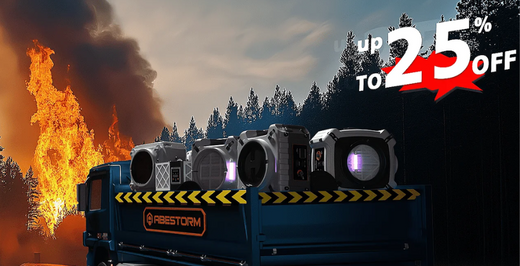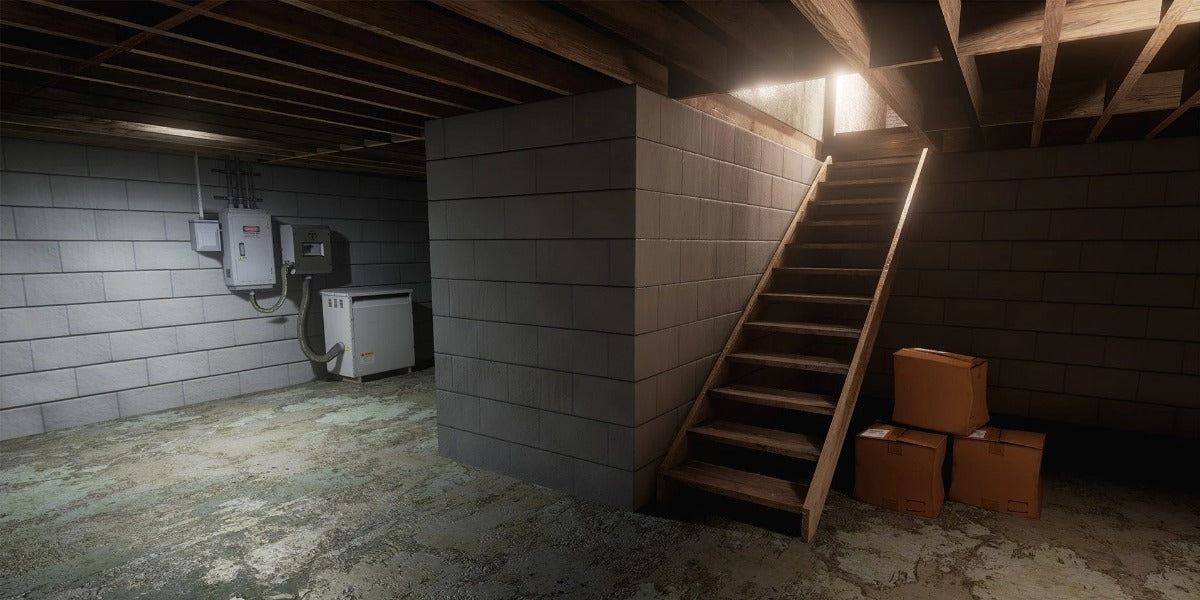Are you looking for the best dehumidifier for grow tent? Keeping humidity in your grow tent under control is necessary to promote plant health and avoid problems like mold or mildewing.
With too much moisture, you will get problems that can hurt the growth of other plants and vale crop yield without a good dehumidifier. This article is going to help you pick the best grow tent dehumidifier for small, medium-sized, and large grow tents.
From the size and type to the level of energy efficiency and noise level, we will help you choose the best one according to your needs.
So let's get started.
Understanding Humidity in Grow Tents
Before getting straight to the best dehumidifier for grow tent, it's essential to first understand the humidity level in grow tents.
Humidity is a very important factor in a grow tent, as it has serious effects on plant keeping and health. Too much moisture in the air would indicate a huge list of problems: mold, mildew, and root rot, with your plants damaged and eventually low yields as a result.
As plants transpire and release moisture in the atmosphere, humidity is increased in the growing area. If not properly managed, the humidity therefore could get converted into moisture, making the environment wet and hence the promotion of unwanted manufacturing fungi and bacteria.
On the other hand, too little humidity stresses plants, which eventually slows down their growth. To maintain a healthy environment, it's important to monitor and control the humidity levels in your grow tent.
With a dehumidifier that fits the quote, you will be able to keep the level of moisture around your plants within the limits so that they stay healthy and draw up the best results.
Now let's learn how you can choose the right dehumidifier for your grow tent.
Factors to Consider When Choosing a Dehumidifier for a Grow Tent
To choose the right dehumidifier for a grow tent, you must consider a few crucial factors. Understanding these factors can help make a considered decision and make sure a dehumidifier that fits the right bill for specific needs is chosen.
1) Size of the Grow Tent
The size of your grow tent plays a crucial role in determining the appropriate dehumidifier capacity. Major dehumidifiers do have a capacity that is proportionate to that of a grow tent, such that sufficient control of humidity could be achieved.
For a small grow tent, up to 4x4 feet, you may use the dehumidifier unit that is of a compact style, with a small capacity. On the other hand, larger tents—like 10x10 feet and above—need high-capacity dehumidifiers to cope with heightened moisture.
Check a dehumidifier sizing guide for advice on choosing a unit of sufficient size for your tent's dimensions.
2) Type of Dehumidifier
Two basic types of dehumidifiers come into play: refrigerant dehumidifier and desiccant dehumidifier. These devices condense the moisture from the air through the absorption process, which means desiccant dehumidifiers remove the moisture differently than refrigerant dehumidifiers.
Besides, refrigerant dehumidifiers will be excellent in this scenario since warm grow room temperatures must be controlled quickly. These are also the most energy-efficient type and perfect for large grow tents.
Therefore, desiccant dehumidifiers are more appropriate in a cooler environment since the desiccant removes humidity by pulling it out of the air with a moisture-absorbing material.
The feature you should keep in mind while selecting one of these categories of dehumidifiers has to do with your environment and specific needs in your grow tent.
3) Energy Efficiency
Another factor to consider is energy efficiency. An energy-efficient dehumidifier lowers energy costs and minimizes greenhouse gas emissions.
Look for the Energy Star rating when searching for models, as these will operate at seriously low power consumption levels while still being able to offer optimal performance.
4) Noise Level
The sound level is yet another aspect of a dehumidifier that will change the comfort of your cultural space. For use in living chambers or if the noise produced is a problem, then a quiet dehumidifier is preferable.
Check the rating for noises when purchasing a dehumidifier; some of the units are almost silent when running. Low-noise dehumidifiers are engineered to make sound as low as possible while handling humidity efficiently.
5) Additional Features
Finally, consider any additional features that might enhance the usability of your dehumidifier. Features like an automatic shut-off can prevent the risk of over-drying; hence, in the process, it helps people save on energy costs.
A dehumidifier with continuous drainage has much less operational hassle; no need for any water trough expenditures, much less looking around robotically for a place to cojed the unit to run for some time, hence offering ease and comfort needed for smooth operation.
Dehumidifier can be selected by considering these aspects so that their final purchase shall allow controlling humidity within your grow tent for a healthy and thriving plant.
Top Recommendations for Best Dehumidifiers for Grow Tents
Choosing the right dehumidifier for your grow tent is crucial for maintaining the optimal humidity levels needed for healthy plant growth.
Here are some top recommendations based on the size of your grow tent:
Small Grow Tents (up to 4x4 feet)
For small grow tents, you would undoubtedly lean towards a compact dehumidifier with good finesse; that does the job in moisture management without necessarily taking too much space.
A portable dehumidifier is also a great option as it can be easily moved around to suit your needs.
1.) Eva-Dry E-333 Renewable Mini Dehumidifier
Features: Compact design, renewable silica gel technology, ideal for small spaces.
Capacity: 6-8 ounces of moisture per day.
Why It's Great: It's easy to use, doesn't require batteries or power, and is perfect for small grow tents.
2.) Pro Breeze Electric Mini Dehumidifier
Features: Portable, quiet operation, energy-efficient.
Capacity: Up to 9 ounces of moisture per day.
Why It's Great: Offers a balance of size and efficiency, with an automatic shut-off feature.
Medium Grow Tents (4x4 to 10x10 feet)
For medium-sized grow tents, you will need a dehumidifier of medium size that gives a balance between capacity and efficiency. An excellent dehumidifier will manage all your moisture levels efficiently and be an energy-sustaining product.
3.) Frigidaire FFAD3033R1 Dehumidifier
Features: Adjustable humidity controls, continuous drainage option, Energy Star rated.
Capacity: 30 pints per day.
Why It's Great: Reliable performance and energy efficiency, suitable for medium-sized spaces.
4.) hOmeLabs 35 Pint Dehumidifier
Features: Built-in pump for continuous drainage, auto-restart, user-friendly controls.
Capacity: 35 pints per day.
Why It's Great: High capacity and efficiency, with additional features for easy maintenance.
Large Grow Tents (10x10 feet and above)
Use high-capacity dehumidifiers for larger grow tents and high amounts of moisture. With such large volumes of air, you should turn to an industrial dehumidifier or a crawl space dehumidifier for effective aeration and an optimum growing condition in the grow tent.
5.) Honeywell TP70AWK Dehumidifier
Features: 70-pint capacity, smart digital controls, auto-restart, and continuous drainage.
Capacity: 70 pints per day.
Why It's Great: Handles high moisture levels with ease and is perfect for large grow tents.
6.) Dri-Eaz F413 Revolution LGR Dehumidifier
Features: Industrial-grade performance, high-efficiency air filtration, rugged design.
Capacity: 80 pints per day.
Why It's Great: Built for heavy-duty use, making it ideal for very large grow tents or commercial applications.
How to Maintain Your Dehumidifier in a Grow Tent?
A properly functioning dehumidifier ensures the grow tent remains in optimal condition.
Here is a step-by-simple guide for you:
· Empty the Water Tank
If you have a dehumidifier with a water-collection tank, you have to make sure you have emptied it regularly to avoid overflowing and loss of efficiency.
· Clean or Replace the Air Filter
If the air purifier uses a filter, it will collect dust and debris. Replace as often as recommended by the manufacturer, usually between 1 and 2 months, to enable an air passage that is free of obstruction and proper working of the dehumidifier.
· Clean the Coils
Condenser coils often get clogged up with dust and dirt. Condenser cooling coils shall be periodically examined for clogging and cleaned using a soft brush or cloth to maintain effectiveness.
· Check the Drainage System
To drain a dehumidifier continuously, ensure that its hose is clear and well-connected. Clean its hose every once in a while so that blockages are not allowed and take a close look at leaks.
· Ensure Proper Ventilation
Make sure there's enough space around the dehumidifier for air to circulate. Avoid placing it in tight or enclosed spaces where airflow is restricted.
Conclusion
Choosing the best dehumidifier for grow tent is key to maintaining a healthy environment for your plants. In other words, this means understanding the size of your tent, picking out the right dehumidifier type, and considering some other factors like energy efficiency and noise levels in the quest for a unit befitting your requirements.









Shop For Dehumidifier